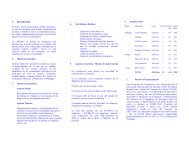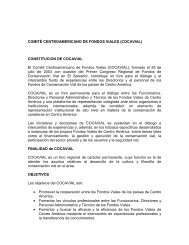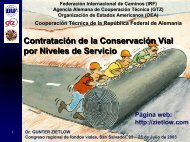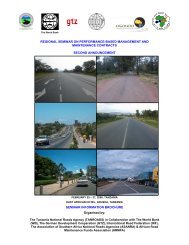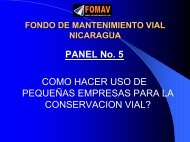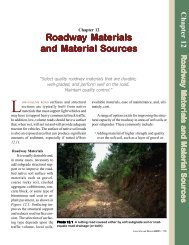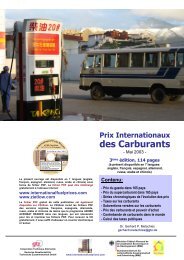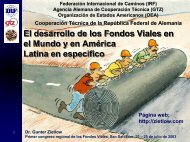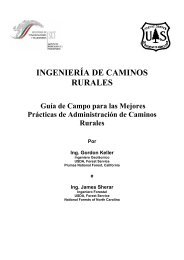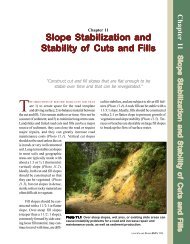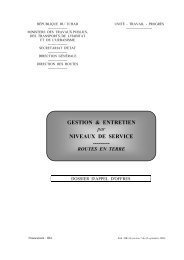You also want an ePaper? Increase the reach of your titles
YUMPU automatically turns print PDFs into web optimized ePapers that Google loves.
NATURAL STREAM CROSSINGS<br />
• Use drainage structures that<br />
best conform to the natural<br />
channel and that are as wide<br />
as the active stream channel<br />
(bankfull width). Minimize<br />
natural channel changes and<br />
the amount <strong>of</strong> excavation or<br />
fill in the channel.<br />
• Limit construction activity to<br />
periods <strong>of</strong> low flow in live<br />
streams. Minimize use <strong>of</strong><br />
equipment in the stream.<br />
Stay out <strong>of</strong> the stream!<br />
• Design structures and use<br />
construction practices that<br />
minimize impacts on fish and<br />
other aquatic species or that<br />
can enhance fish passage.<br />
• Cross drainage channels as<br />
infrequently as possible.<br />
When necessary, cross<br />
streams at right angles<br />
except where prevented by<br />
terrain features (Figure<br />
7.10).<br />
• Keep approaches to stream<br />
crossings to as gentle a<br />
RECOMMENDED PRACTICES<br />
grade as practical. Roll<br />
grades into and out <strong>of</strong> the<br />
crossing to disperse water.<br />
• Stabilize disturbed soil<br />
around crossings soon after<br />
construction. Remove or<br />
protect fill material placed in<br />
the channel and floodplain.<br />
• Use bridges, low-water fords<br />
or improved fords, and large<br />
arch pipes with natural<br />
stream bottoms wherever<br />
possible to maximize flow<br />
capacity, minimize the<br />
possibility <strong>of</strong> a plugged pipe,<br />
and minimize impacts on<br />
aquatic species.<br />
• Locate crossings where the<br />
stream channel is straight,<br />
stable, and not changing<br />
shape. Bedrock locations are<br />
desirable for concrete<br />
structures.<br />
• For overflow protection,<br />
construct fills over culverts<br />
with an armored low point<br />
near the pipe in low fills or<br />
add an armored rolling dip<br />
on native ground just beyond<br />
a large fill to return<br />
water to the drainage and<br />
prevent <strong>of</strong>f-site damage<br />
(Figure 7.11).<br />
• Stabilize roadway approaches<br />
to bridges, fords,<br />
or culvert crossings with<br />
gravel, rock, or other<br />
suitable material to reduce<br />
road surface sediment<br />
from entering the stream<br />
(Figure 7.12). Install<br />
cross-drains on both sides<br />
<strong>of</strong> a crossing to prevent<br />
road and ditch run<strong>of</strong>f from<br />
entering the drainage<br />
channel.<br />
• Construct bridges and<br />
culvert fills higher than the<br />
road approach to prevent<br />
road surface run<strong>of</strong>f from<br />
draining directly into the<br />
stream -- but ONLY if<br />
likelihood <strong>of</strong> culvert<br />
failure is VERY small.<br />
(Figure 7.13). Typically,<br />
the crossing should be<br />
designed to minimize the<br />
amount <strong>of</strong> fill.<br />
PRACTICES TO AVOID<br />
• Working with equipment in<br />
an unprotected natural<br />
streambed.<br />
• Locating stream crossings<br />
in sinuous or unstable<br />
channels.<br />
• Adversely impacting fisheries<br />
with a stream crossing<br />
structure.<br />
• Allowing run<strong>of</strong>f from roadside<br />
ditches to flow directly<br />
into streams.<br />
LOW-VOLUME ROADS BMPS:66



